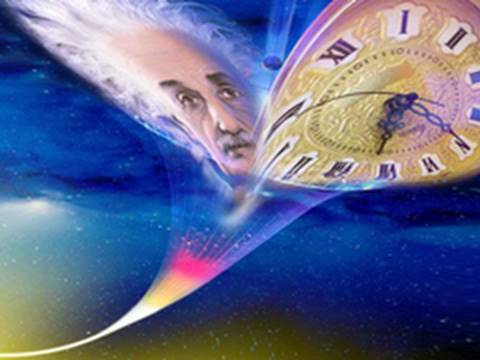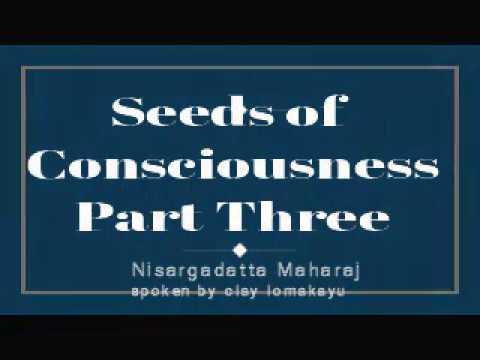ScienceTV
http://facebook.com/ScienceReason … Albert Einstein’s Theory of Relativity (Chapter 2): The Phenomenon of Time Dilation.
Time dilation is a phenomenon (or two phenomena, as mentioned below) described by the theory of relativity. It can be illustrated by supposing that two observers are in motion relative to each other, and/or differently situated with regard to nearby gravitational masses. They each carry a clock of identical construction and function. Then, the point of view of each observer will generally be that the other observer’s clock is in error (has changed its rate). Both causes (distance to gravitational mass and relative speed) can operate together.
—
Please subscribe to Science & Reason:
• http://www.youtube.com/Best0fScience
• http://www.youtube.com/ScienceMagazine
• http://www.youtube.com/ScienceTV
• http://www.youtube.com/FFreeThinker
—
Time dilation can arise from (1) relative velocity of motion between the observers, and (2) difference in their distance from gravitational mass.
(1) that the observers are in relative uniform motion, and far away from any gravitational mass, the point of view of each will be that the other’s (moving) clock is ticking at a slower rate than the local clock. The faster the relative velocity, the greater the magnitude of time dilation. This case is sometimes called special relativistic time dilation. It is often interpreted as time “slowing down” for the other (moving) clock.
But that is only true from the physical point of view of the local observer, and of others at relative rest (i.e. in the local observer’s frame of reference). The point of view of the other observer will be that again the local clock (this time the other clock) is correct, and it is the distant moving one that is slow. From a local perspective, time registered by clocks that are at rest with respect to the local frame of reference (and far from any gravitational mass) always appears to pass at the same rate.
(2) There is another case of time dilation, where both observers are differently situated in their distance from a significant gravitational mass, such as (for terrestrial observers) the Earth or the Sun. One may suppose for simplicity that the observers are at relative rest (which is not the case of two observers both rotating with the Earth — an extra factor described below). In the simplified case, the general theory of relativity describes how, for both observers, the clock that is closer to the gravitational mass, i.e. deeper in its “gravity well”, appears to go slower than the clock that is more distant from the mass (or higher in altitude away from the center of the gravitational mass).
That does not mean that the two observers fully agree: each still makes the local clock to be correct; the observer more distant from the mass (higher in altitude) measures the other clock (closer to the mass, lower in altitude) to be slower than the local correct rate, and the observer situated closer to the mass (lower in altitude) measures the other clock (farther from the mass, higher in altitude) to be faster than the local correct rate. They agree at least that the clock nearer the mass is slower in rate, and on the ratio of the difference. This is gravitational time dilation.
In Albert Einstein’s theories of relativity, time dilation in these two circumstances can be summarized:
* In special relativity (or, hypothetically far from all gravitational mass), clocks that are moving with respect to an inertial system of observation are measured to be running slower. This effect is described precisely by the Lorentz transformation.
* In general relativity, clocks at lower potentials in a gravitational field—such as in closer proximity to a planet—are found to be running slower. The articles gravitational time dilation and gravitational red shift give a more detailed discussion. Special and general relativistic effects can combine, for example in some time-scale applications mentioned below.
Thus, in special relativity, the time dilation effect is reciprocal: as observed from the point of view of either of two clocks which are in motion with respect to each other, it will be the other clock that is time dilated. (This presumes that the relative motion of both parties is uniform; that is, they do not accelerate with respect to one another during the course of the observations.)
• http://en.wikipedia.org/wiki/Time_dilation
.
Source




Lol, such nonsense – time is an abstract concept created by humans, it can't speed up or slow down
people are stupid, believing Einstein's insane babblings. What we need is real Physics, not this crap.
The guy even says in the moving system the beam of light travels further. Using rt=d, or t=d/r, the reason it seems like time is being dilated is because the distance is longer so it takes longer time to make one cycle. Time stays constant. It doesn't dilate.
Einstein came across his "fudge factor" based upon the failed Michelson-Morley experiment that showed the speed of light is the same.
A TIME ARE ONLY MEASURE AND FUNTION IF HAVE A SUN AND PLANET, WITHOUT PLANET AND SUN NO TIME ARE GIVEN, IN THE SPACE TIME CANNOT WORK BECAUSETIME ARE CAME FROM THE ROTATION OF THE PLANET TO THE SUN
Take the twins … put one on the train moving close to the speed of light, put the other on the train platform. The tracks encircle the Earth. The train goes round and round, then stops at the platform to reunite the twins. The one who was riding the train is younger and still has brown hair while his brother aged and has grey hair. BUT, the twin on the train saw the platform as moving and the clock running slower next to his platform bound brother, so according to the train riding twin, his brother has brown hair while he himself is gray! Somebody please tell me who is gray!
Dude, the background music is so annoying. You are trying very hard to put us to sleep.
how is this thing that this video only has these views from 2010 whats happening world.
You stupid ass clown's should worry about paying your child support payment and party like there is no tomorrow you sons of bitches Amen
This is just a perception of time dilating it doesn’t actually dilate. For example if you move away from earth at light speed for 20 years and you look back at earth you would be with the same light waves that left the earth when you left 20 years ago, so you would think omg time slowed down for me because I just experienced 20 years but now that I look at the earth it’s the exact same. But if you were to go back to the earth at the speed of light, you would almost see the earth speeding up in time as it catches up to be on par with the time you just experienced. All perception I believe.. I might be wrong tho lol
im too stupid to understand this video. i made it to 1:47
And from here (2019) it seems like your animations of the spaceship crew are relative to Einsteins (1919) view on women
poor material very bad explanation, it's obviouse that there is a big contradiction here why moving light is afected by mouving mirror since light will keep same velocity in all references
The special theory of relativity can't be correct because it results in paradoxes. Let's say there are two spaceships passing each other at a high rate of speed. At the moment the tail of one ship reaches the nose of the other ship, the nose has both passed and not passed the tail of the other ship. For example…
T——————–N
<—– N———-T
T———-N —–>
N——————–T
Depending upon which frame of reference you choose as being at rest the nose of one spaceship has either passed or not passed the tail of the other spaceship. Obviously, the tail passes the nose only once, not twice.
Maybe someone can explain this. What is a motion? How do you explain motion? It's like a movement relative to something right? In space one ship is still and other is in motion. How can you tell that one ship is still? It is standing still relative to the second ship moving. But maybe the the second ship is still and the first one is going backwards? If you think about it, universe is probably infinite, our planets, stars, galaxies etc. are travelling at enormous speeds, the universe is expanding all the time with increasing speed. So if I am in a space ship in space standing still, how do you know I'm still? Wouldn't I be actually moving at speeds of millions of km/h relative to all the universe????
I want to be the Captian of that ship with all those hotties on board
http://italiota.altervista.org/estensione-e-pensiero/?doing_wp_cron=1542798028.4233028888702392578125
Upto 6:10 understood clearly. Upto 7:48 managed to understand after repeatedly watching the clip for a couple of times. After 7:48 couldn't understand (how can time slow down for the observer) – "the beam is travelling/covering more distance" but the narrator is saying "time slows down" – i still dont get this point after watching so many videos for so many years.
I don't buy it… There is one thing I do not get: by using two plates with a light beam bouncing up and down in between, and the spaceship shifts forward, I get why the time gets slower. But what if the two plates were at left and right and the light beam bouncing from left to right, with the spaceship shifts forward, the time will stay constant? The regularity of the light beam striking back and forth represents time, so how do we explain this?
The speed of light isn't constant for all observers. There is an eclipsing binary star named Algol. The eclipses come further apart in time when the Earth is moving away from the star. The eclipses come closer together in time when the Earth is moving towards the star. This is because the light is passing the Earth more quickly when the Earth is moving towards the star and the light is passing the Earth more slowly when the Earth is moving away from the star.
http://calgary.rasc.ca/algol_minima.htm
John David Best has his web site Vida İnstitute. He put my articles page in 'Timeflow Theory' 'http://vidainstitute.org/?page_id=656'. Vida Institute is intersting site. And my web site is http://www.timeflow.org
In your opinion, discovery of a planet is more exciting. Or, as I've presented in the attached article,
whether observing 'A very tiniest mass in the space, having completed its life, have been turning
into energy' would be more exciting or not ? It is my belief that, this observation will be the proof
of the General and the Special Theory of Relativity. This observation can be made only by NASA or
ESA. I hope that I will be able to see this consequence while I'm still alive.
8:28 I don't understand. How can it be that both observers see the other clock moving slower? It doesn't make any sense! If I travel at a high speed, and then come back to earth, would the people be younger or older?
This blows my mind seriously.!!!!!!
But would you get older on a curve – and would you get younger on the way back… stupid question on time dilation… so no trolls please
My brain just farted. ?
Echo chamber is annoying
Wew Jew
Terrible narration. Could only listen for 13 seconds
time slowing is a bend in space. it's gravity. To Not Realize The Gravity Wave Of Time Is What Your Measuring Is Sad. An Atomic Clock Slows In A Centrifuge Every Time And It's Gravitational. You Don't Eat Enough Meat.
How does observing someone else’s clock change their time? Also, you have to watch the other persons clock at a 90 degree angle for their time to change? What if they were coming straight at you?
Middle finger to interstellar.
Thumbs up to you guys.
Einstein was wrong about time dilation.
Put same atomic clocks in the sun, earth, mars, flying air plan, for 1 day.
Each clock will have a different reading.
Which time is dilated? which clock has correct time?
Time dilation is a misinterpretation of timer's moving rate/reading affected by gravity/acceleration/force acting upon it.
Time is not a thing, the time has no location, cannot be touched, what is dilating what? How? What is the mechanism? Google fucked science.
I don't understand why I having such a hard time grasping time dilation uggghh! Why doesn't it make any sense!??
4:40 when mom makes u study till late at night
5:09 Einstein proved this? or just made that up?
You need to be more clear about the fact that, a normal mechanical clock will in no circumstances run slower than another clock that's the same, due tohow fast your moving, the fact is that its run with a mechanical mechanism that will always stay constant no matter how fast you're going however this might work with a clock that runs on an atom spin or a light beam
Man! I want to be in that ship. The crews are so damn hot.
Hello. The problem with your starships experiment is that it is assuming that the laser beam initial point of departure (when it was produced into space) continues to be just in front of the laser beam blaster. Hence, when beam reaches its destination, the distance that spaceship experiment measures is wrong. The distance that should have been measured is the point at which the laser beam was initially produced into space ( behind the moving spaceship). In other words, in regards to the property of light it would be safe to say that the point in space ( universe) where a light pulse is initially produced, provided there are no significant gravitational or other forces at work, could well be considered a point of absolute rest. Thus, if this is the one experiement that the special theory of relativity rests on to infer time dilation, I would find the conclusions about time questionable at the very least. In my opinion, time is a merely human construct to measure changes and movement. Our mechanisms ( watches, atomic clocks) to measure our common concept of time ( seconds, months, time the earth goes around the sun) are for the most part imperfect. There are vulnerable to different conditions such as low gravity ( in high elevations), no gravity ( in space), non-earth gravity ( when astronauts travel around the moon), inertia forces and will produce erroneous readings. In my view a more accurate way to measure conventional time would be to develop machines that could accurately observe the motions and phases of celestial bodies including our own. thanks.
but how can we say that the speed of light is constent ???????????????????
If we shoot two light beams in opposite directions, what would happen then?
Give the new format a shot